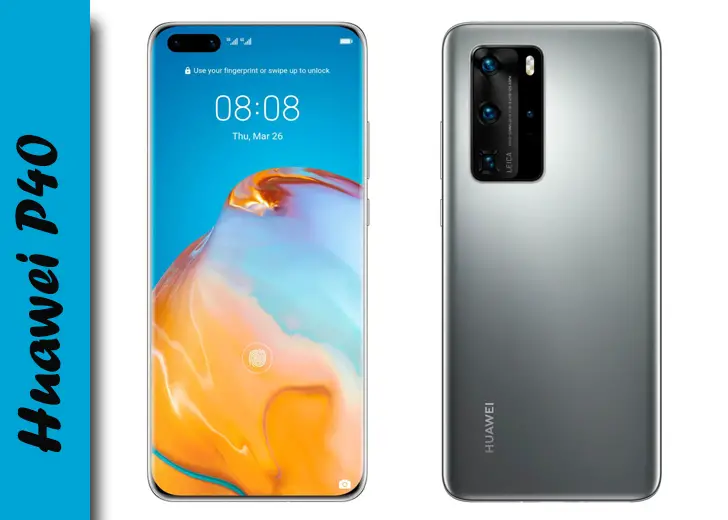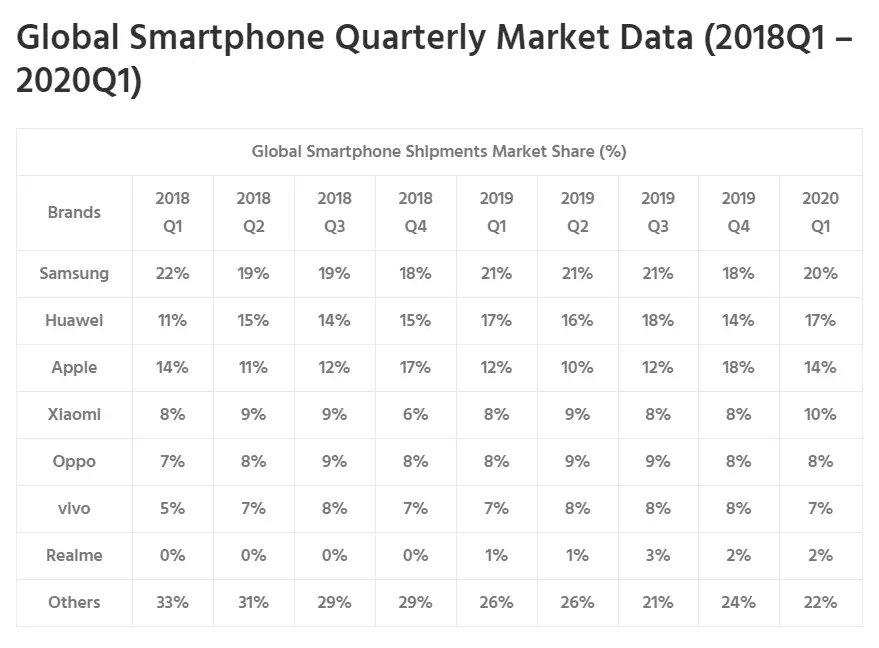Don't Buy Huawei P40 Series Until Trade Ban Is Over

After the much-revered and successful P30 series, everyone expected Huawei to break the mold yet again with the P40 series. And the flagship phone has done just that, at least on the hardware front.
Huawei’s P40 series is the smartphone manufacturer’s second flagship offering since Trump imposed the trade ban on Huawei products in the US starting from May 2019. The trade ban restricted US companies from collaborating with Chinese or China-linked companies that the government deemed untrustworthy.
The trade ban meant bad news for Huawei. After the trade ban was activated, the smartphone brand was not allowed to run valuable Google services such as Google Apps or Google Mobile Services (GMS) in its new smartphones.
How the P40, P40 Pro, and P40 Pro Plus compare to each other?
All three smartphones under the P40 name share similar components but the differences start to show when we look at their prices, design material used, memory, storage, battery, and camera specifications.
Here is what the P40 series share with each other,
- 5G compatibility
- Dual SIM and eSIM compatibility
- Wi-Fi 6 plus compatibility
- Kirin 990 5G (7 nm+) processor
- Operating System: EMUI 10.1 based on Android 10
- “Best Photo Smartphone” as per TIPA Awards 2020. Camera optics co-engineered with Leica
- UFS 3.0 internal storage. Expandable storage up to 256gb through Nano Memory
- Under display fingerprint sensor and infrared facial recognition
Here is how the P40 series differ from each other,
| Specifications | Huawei P40 | Huawei P40 Pro | Huawei P40 Pro Plus |
|---|---|---|---|
| Price | Starts from £699 / Approx. $870 | Starts from £899 / Approx. $1129 | Starts from £1,299 / Approx. $1620 |
| Body |
Width: 71.06mm Aluminum build 5 color options: Deep Sea Blue, Ice White, Black, Blush Gold, and Silver Frost IP53 dust and splash protection |
Width: 72.6mm Height: 158.2mm Depth: 8.95mm Weight: Approx. 209g (including the battery) Aluminum build 5 color options: Deep Sea Blue, Ice White, Black, Blush Gold, and Silver Frost IP68 dust/water |
Width: 72.6mm Height: 158.2mm Depth: 9.0mm Weight: Approx. 226g (including the battery) Ceramic Build 2 color options: Black, White IP68 dust/water resistant (up to 1.5m for 30 mins) |
| Display | 6.1 inches OLED curved screen, 1080 x 2340 pixels |
6.58 inches OLED curved screen, 1200 x 2640 pixels, 90 Hz refresh rate |
6.58 inches OLED curved screen, 1200 x 2640 pixels, 90 Hz refresh rate |
| Memory (Storage/RAM) |
128GB/6GB RAM, 128GB/8GB RAM, 256GB/8GB RAM | 128GB/8GB RAM, 256GB/8GB RAM, 512GB/8GB RAM | 256GB/8GB RAM, 512GB/8GB RAM |
| Camera Co-engineered with Leica |
Rear Cameras: Front Camera: |
Rear Cameras: Front Camera: |
Rear Cameras: Front Camera: |
| Battery | 3800 mAh, 22.5 W Fast Charging |
4200 mAh, 40 W Fast charging, 27 W Fast wireless charging, 27 W Fast reverse wireless charging |
4200 mAh, 40 W Fast charging, 40 W Fast wireless charging, 27 W Fast reverse wireless charging |
Starting from £699 (approx. $870) and maxing out at £1,299 (approx. $1620), the P40 series is certainly providing buyers with choices according to their needs and budget. This approach is similar to what Huawei direct competition - Samsung’s S20 lineup and Apple’s iPhone11 lineup (until Apple’s iPhone 12 lineup releases) did.
For more budget options, Huawei has also released the P40 Lite 5G and P40 Lite at £379 (approx. $475) and £279 (approx. $350) respectively.
How the Trade Ban has Affected Huawei?
If we compare all of the flagship price points, we will find that Huawei’s P40 series are some of the best smartphones for people who want premium smartphones on budget.
Similarly, the P40 series ticks all boxes when it comes to design, performance, and camera, but what it lacks is in its software. And the big part of that is because of US President, Donald Trump and the ongoing US-China trade war.
Back in May 2019, President Trump imposed a trade ban on Chinese information and communication technology companies and put them on an Entity List.
The companies, including Huawei, which were put on the Entity list were disallowed to collaborate with US companies. Huawei was put on the list because of privacy and security concerns raised by the US government and institutions.
The ban landed a heavy blow to the Huawei because it meant that its new phones could no longer utilize Google services. And this is why the sales of any Huawei phones released after the trade ban have gone downhill.

Before the ban, the multinational Chinese company was gearing up for increasing smartphone sales on the back of its successful home-country records and the global acceptance of the P30 series
Yes, Huawei P40 Series Have Great Hardware. But, You Should Not Buy Them
If you use Google apps for your work or business, the P40 series is a no go for you because of absence of loaded Google apps on such phones.
If that is not a dealbreaker then the omission of GMS (Google Mobile Services) certainly should be. Without GMS, Google’s Play Store does not work and that means Huawei P40 series do not get access to the vast library of apps essential for the smartphone experience.
Indeed, it is true that Huawei has developed its own App Gallery and Huawei Mobile Services (HMS) to provide similar functionality. But such Huawei services are still nowhere near in comparison to Google Play or Apple’s App Store.
Furthermore, we also know about the last app store that tried to go head-to-head with the Play Store and App Storeâ —look where Microsoft’s Windows Mobile is now.
Therefore, I suggest you only buy Huawei phones if one of these two conditions is met: the first one is the cancellation of the trade ban and the other one is the development of a full-fledge Huawei Mobile Services.
At present, Huawei’s App Gallery and HMS still need to integrate numerous apps to work on the brand's phones.
Although the company knows that it is easier for apps to be developed on Android systems and is working hard trying to improve their App Gallery and HMS, you shouldn't buy a product with sub-par software support.
But What If I Get Google Services & Apps From Third Parties?
There are ways to get Google Play Store apps on the web through other websites and third-party app stores like the Amazon App Store, but this is still a tedious workaround.
Even if you manage to find the desired app via the abovementioned ways, it may not work or may bring forth even worse security issues through spyware or malware. While there are ways to load Google apps on Huawei phones, Google does not recommend this method since it says they possess “high risk” that could compromise user security.
To make matters worse, games that are not already on Huawei’s App Gallery may not work on Huawei phones because games made for Android mostly rely on Google Play Games for functionality and autosave. Similarly, apps like Whatsapp that autosave using Google Drive will have issues if installed from other sources,
Likewise, you will have no Google Maps to rely on if you purchase a Huawei device. All the Play Store apps such as ride-hailing, mobile banking and local-service apps, will not function on your device until Huawei makes individual agreement with these apps companies.
All of these problems will persist in the Huawei P40, P40 Pro, and P40 Pro Plus. Add that with the privacy concerns that got Huawei in the Entity List in the first place, the Huawei P40 series definitely takes a lot of work to be usable on a daily basis.
So, I request you not to buy a Huawei phone until May 2021— President Donald Trump had extended the ban until the date.
Google and Huawei, however, are against this unfavorable trade ban. Google even filed for permission to work with Huawei in early 2020.